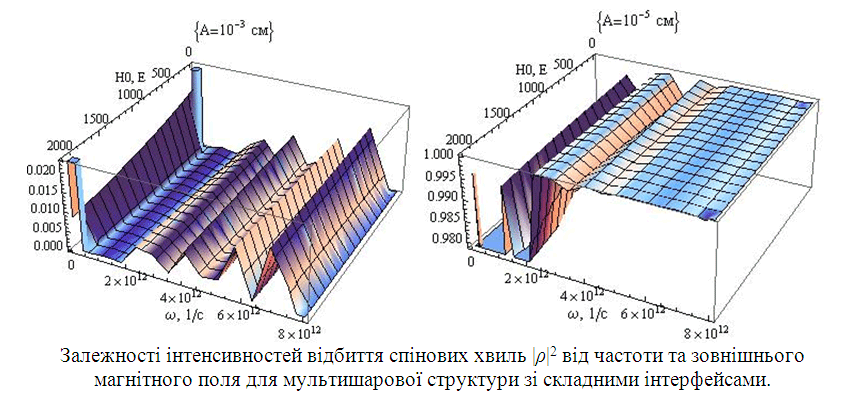Spin wave propagation in heterogeneous modulated ferromagnetic structures with complex interfaces
A theory is developed for the reflection of spin waves from periodic modulated ferromagnetic structures with complex interfaces, taking into account the generalized boundary conditions including the inhomogeneous character of the contact boundaries of two homogeneous media formed as a result of the superposition of crystal lattices of two contacting
media, taking into account the exchange interaction both within each of such sublattices and between the magnetic moments of the imposed lattices. The inhomogeneous character of anisotropy and exchange interaction inside the interfaces is taken into account, as well as the
effects associated with the violation of inversion symmetry. Separate layers of the multilayer structure can be characterized by different values of the parameters of exchange interaction, uniaxial anisotropy, and saturation magnetization. The theory is developed on the basis of the model of a continuous medium in the exchange mode that corresponds to the high-frequency
region of the spectrum of spin waves. Field, frequency and material dependences of the reflection coefficient of bulk spin waves from a magnonic crystal with interfaces of a generalized form are obtained. The influence of an external homogeneous magnetic field is considered. The change in its magnitude can serve as an effective means of controlling the reflective
characteristics of multilayer ferromagnetic media in which spin-wave scattering occurs. In particular, without changing the material parameters of the medium for the chosen frequency of the spin wave, it is possible to achieve a change in the intensity of the reflected wave from zero
to one due to a change in the magnitude of the external uniform permanent magnetic field. It is shown that similar magnonic crystals can be used as effective multiband spin-wave filter with controlled filtering zones.

| Attachment | Size |
|---|---|
| 193.79 KB |




